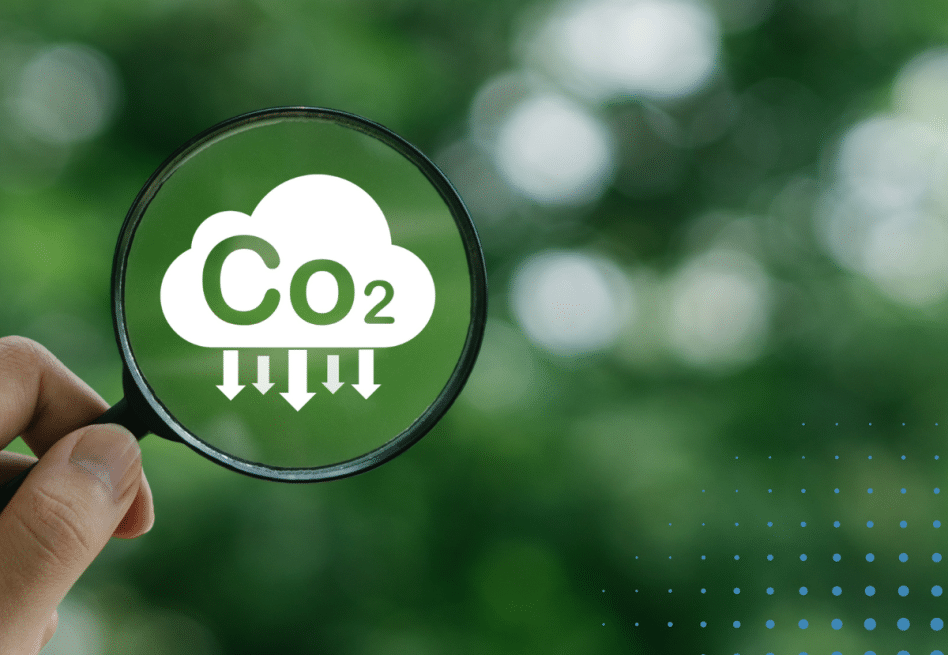Carbon Capture Utilization & Storage (CCUS)
CARBON CAPTURE, UTILIZATION AND STORAGE ARE THE FUTURE – ARE YOU READY?
Carbon Capture, Utilization, and Storage (CCUS) is an innovative and crucial set of technologies that organizations should be considered to assist in combating climate change effectively. CCUS involves capturing carbon dioxide (CO2) emissions from industrial processes or power generation, utilizing the captured CO2 for various applications, and safely storing it underground. CECO Environmental partners with climate-conscious customers to provide the most reliable and efficient technologies for CCUS applications
CARBON CAPTURE UTILIZATION AND STORAGE (CCUS) 101
By implementing CCUS, CEOs can significantly reduce their organization’s carbon footprint and contribute to global emission reduction targets. CCUS allows industries to decarbonize while continuing their operations, enabling a sustainable energy transition. Moreover, CCUS offers new economic opportunities by creating industries and markets centered around CO2 utilization. The captured CO2 can be used for enhanced oil recovery, production of building materials, chemicals, and fuels, creating a circular economy that reduces emissions and promotes resource efficiency.
To embrace CCUS, CEOs should prioritize collaboration with governments, industries, and research institutions to drive the deployment and integration of CCUS technologies. Supportive policies, incentives, and regulatory frameworks are essential to accelerate CCUS adoption and ensure a level playing field. Additionally, continued investment in research and development is crucial to enhance the efficiency, cost-effectiveness, and scalability of CCUS technologies, making them more accessible and attractive for businesses.
In conclusion, CCUS represents a transformative opportunity for CEOs to lead their organizations towards sustainability, emission reduction, and economic growth. By embracing CCUS, CEOs can demonstrate environmental stewardship, meet climate goals, and capitalize on the emerging market opportunities associated with carbon capture and utilization.

WHAT IS THE VALUE IN CCUS?

Global CO2 emissions from fossil fuels exceeded 37- tons in 2021. More and more companies are establishing emission and carbon neutrality goals, with the net-zero emission targets ranging from the year 2030 to 2080. CCUS is one component to achieving these goals and has a long-term position in the market due to existing CO2-generating equipment and hard-to-abate applications. Forecasts for the CCUS market estimate the need for 500k to 2 billion tons of yearly capacity by 2030 and 5 to 10 billion tons of yearly capacity by 2050. For reference, the US grid generated 0.9 billion tons of CO2 in 2022, alone. This market will continue to grow, with new laws and regulations changing regularly and be a major industrial sector.
Climate change is an urgent global challenge, the science is clear that a reduction in global CO2 levels is a necessary step to mitigate the impact of climate change. CCUS is a key component of the Energy Transition necessary to achieve net-zero emission goals. Moreover, experts agree that CCS will be particularly vital for hard-to-abate sectors like cement and steel production, where no other viable solutions currently exist, and for removing CO2 already in the atmosphere.
HOW DOES CECO SERVE CCUS?
CECO is positioned to service the storage and utilization markets through the Peerless and Transcend filtration and separation solutions.
PEERLESS SEPARATION AND FILTRATION
Peerless Separation & Filtration is a global leader in separation technologies for the oil, gas and petrochemical markets. Offering systems for both onshore and offshore applications, Peerless designs and supplies a wide range of compact, engineered, high-efficiency processing, industrial separation and filtration equipment for the global oil and gas industry.
TRANSCEND SOLUTIONS
Transcend Solutions manufactures efficient, innovative, and customized separations solutions that optimize critical customer processes in the hydrocarbon production and processing industries. We combine process engineering knowledge, separations technology and flexible manufacturing to develop root cause solutions for endemic process issues.
Point Source Capture falls into three primary categories: Direct Air Capture, Power, and Industrial Sources. The US Industrial Sector contributed to 1,3000 million tons of CO2 in 2020. The key applications in industrial sources are ethanol, iron/steel, cement, H2 production.
Post-combustion carbon capture technologies are designed to capture carbon dioxide (CO2) emissions from flue gases after the combustion process. Some of the main post-combustion carbon capture technologies include:
CHEMICAL ABSORPTION
Chemical Absorption: Chemical absorption is a widely used post-combustion capture technology. It involves passing flue gases through a liquid solvent, typically an amine solution, which selectively absorbs CO2. The CO2 is then separated from the solvent through a process called stripping, producing a concentrated CO2 stream that can be stored or utilized.
PHYSICAL ABSORPTION
Physical absorption techniques involve using solvents or solid materials to physically absorb CO2 from flue gases. These materials have a high affinity for CO2 and capture it through physical interactions, such as adsorption or absorption. Physical absorption methods often employ advanced materials, such as porous solids or activated carbon, to enhance the CO2 capture efficiency.
MEMBRANE SEPARATION
Membrane separation technologies use specialized membranes to selectively separate CO2 from flue gases. These membranes allow CO2 to pass through while blocking other components of the flue gas. Membrane separation offers advantages such as simplicity, low energy requirements, and scalability. However, the technology is still under development and faces challenges in achieving high CO2 capture efficiency.
CRYOGENIC SEPARATION
Cryogenic separation involves cooling the flue gas to very low temperatures, causing CO2 to condense and separate from other gases. The captured CO2 can then be collected and stored. Cryogenic separation is an energy-intensive process and is typically used in specific applications where the CO2 concentration is relatively high.
ADSORPTION
Adsorption technologies employ solid sorbents, such as activated carbon or zeolites, to capture CO2 from flue gases. The sorbents have a high affinity for CO2, which adsorbs onto their surface. The captured CO2 can be released from the sorbent through heating or pressure swing, allowing for its subsequent storage or utilization.
Each of these post-combustion carbon capture technologies has its advantages, disadvantages, and specific considerations in terms of energy requirements, costs, scalability, and CO2 capture efficiency. The selection of the most suitable technology depends on factors such as the emission source, flue gas composition, and project-specific requirements.
WHY CHOOSE CECO?
WHY CHOOSE CECO?
CECO Environmental is a leading environmentally focused, diversified industrial company whose solutions protect people, the environment, and industrial equipment across the globe, serving a broad landscape of industrial air, industrial water and energy transition markets, including the lithium mining, battery manufacturing and recycling market.
We have over 150 years of innovation and deep application expertise at CECO Environmental. Our heritage dates to 1869, when the Dean Brothers Pump Company was established to solve the world’s high-temperature pumping challenges. One hundred years later, the Claremont Engineering company was founded and became known as CECO Environmental. We now have more than 20 known and trusted companies that have joined the CECO family of brands.
“希柯能够为客户提供服务,解决真正的工业挑战,同时保护我们最重要的自然资源,从而取得成功,我们对此引以为傲。”
——首席执行官Todd Gleason
产品问询

CLEANER ENERGY,
CLEANER FUTURE
To learn more about these total solutions to improve the environmental performance of your business, fill out the form or click the email button below.
